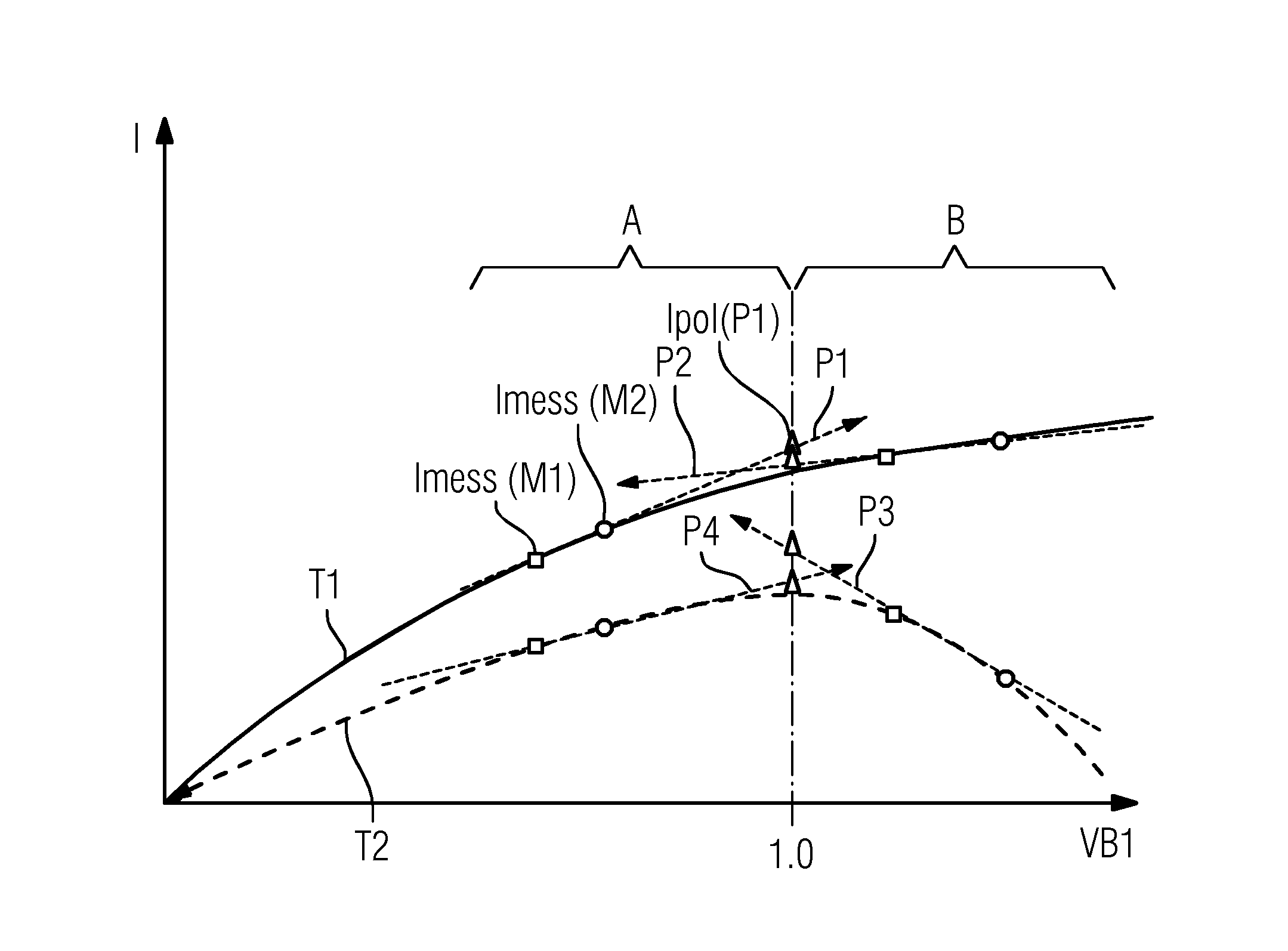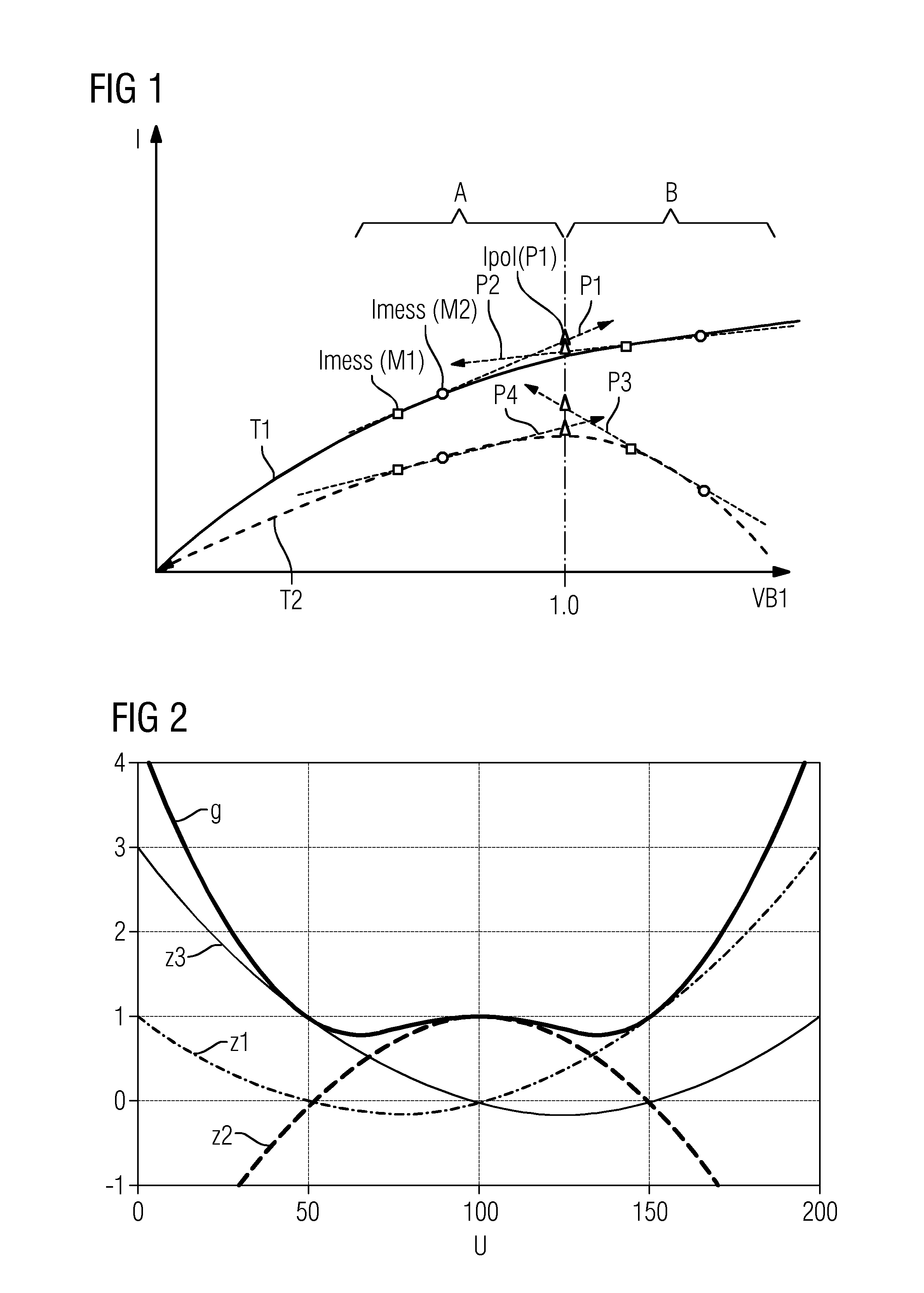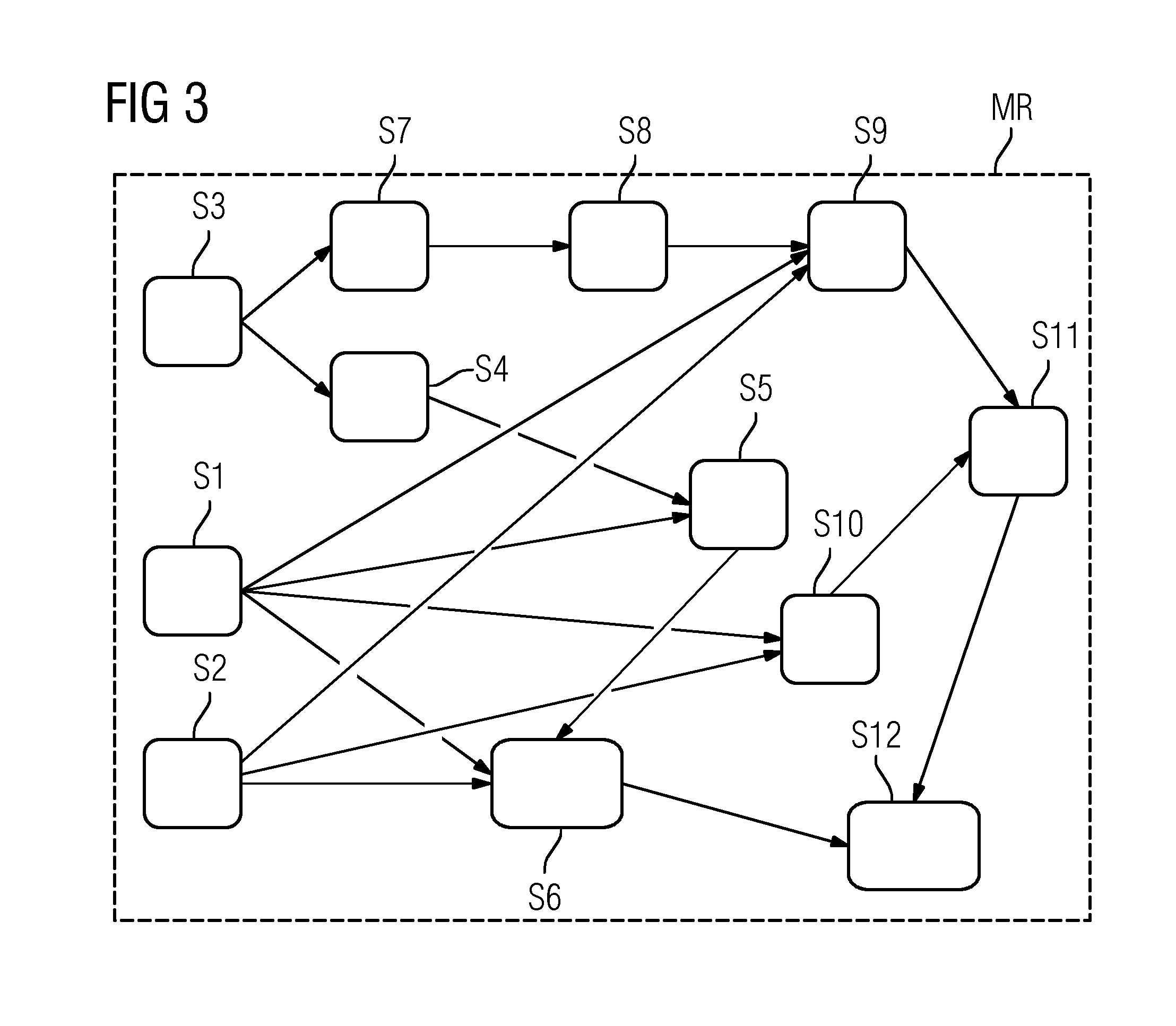Correction of imaging methods in a magnetic resonance device
- Summary
- Abstract
- Description
- Claims
- Application Information
AI Technical Summary
Benefits of technology
Problems solved by technology
Method used
Image
Examples
Embodiment Construction
[0072]FIG. 1 depicts a signal intensity or signal strength I in arbitrary units of pixels of two MR measurements or MR images M1 and M2 plotted against a ratio VB1 of an actual transmit B1 value at the location of a respective pixel to a transmit B1 target value. The ratio also corresponds to a ratio of a correspondingly arising actual flip angle to a target flip angle. The MR images M1 and M2 differ from one another by virtue of differing transmitter settings, in particular, for differing transmitter scalings. The signal intensities measured in this situation are dependent on the local transmit B1 values for M1 and for M2.
[0073]To the left of the ratio VB1=1, in other words where VB1 value is too low in a spatial region A of the object to be measured. Conversely, to the right of the ratio VB1=1, in other words where VB>1, the actual transmit B1 value is too high in another spatial region A of the object to be measured.
[0074]The ratio VB1 is given by the transmitter scaling multipli...
PUM
 Login to View More
Login to View More Abstract
Description
Claims
Application Information
 Login to View More
Login to View More - R&D
- Intellectual Property
- Life Sciences
- Materials
- Tech Scout
- Unparalleled Data Quality
- Higher Quality Content
- 60% Fewer Hallucinations
Browse by: Latest US Patents, China's latest patents, Technical Efficacy Thesaurus, Application Domain, Technology Topic, Popular Technical Reports.
© 2025 PatSnap. All rights reserved.Legal|Privacy policy|Modern Slavery Act Transparency Statement|Sitemap|About US| Contact US: help@patsnap.com



